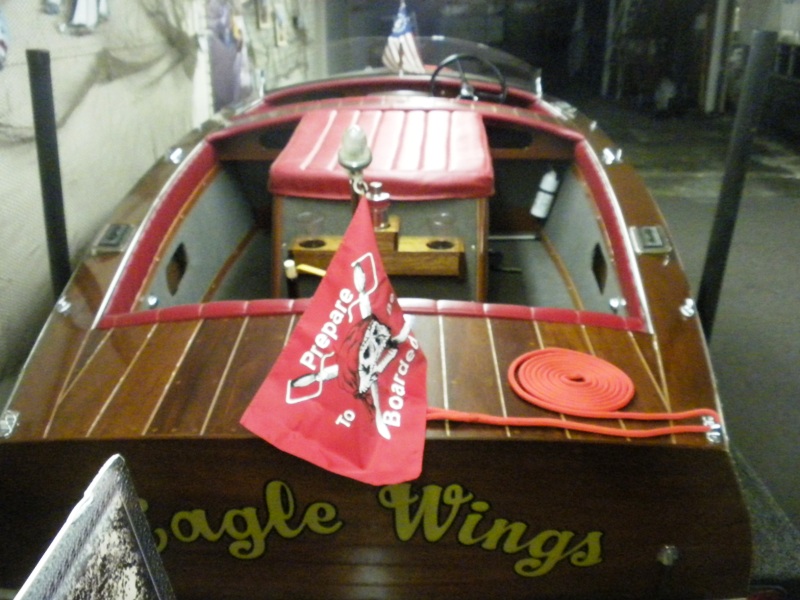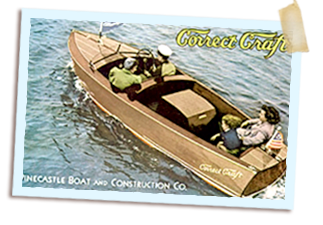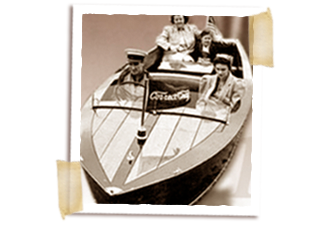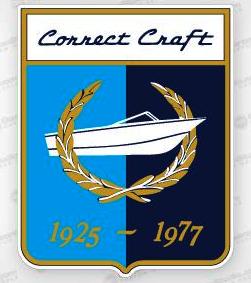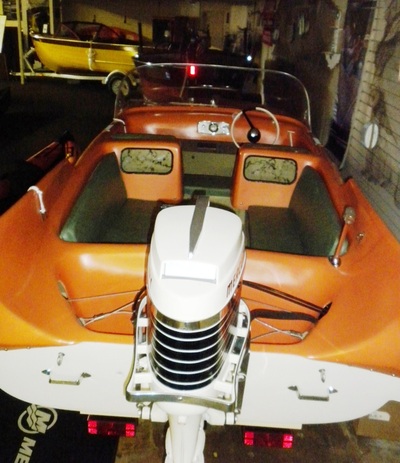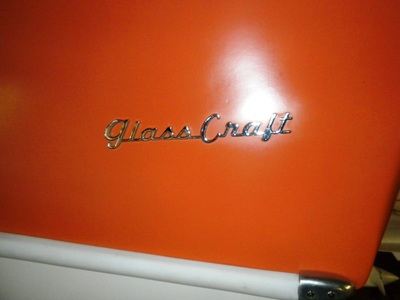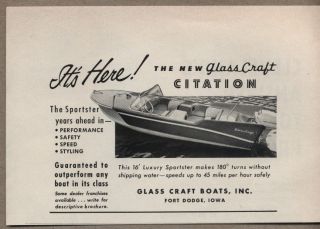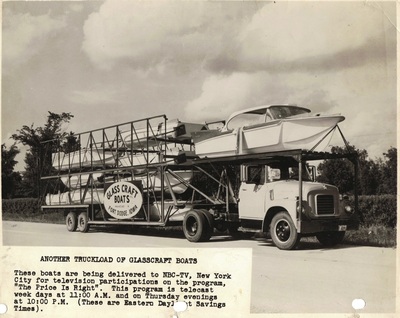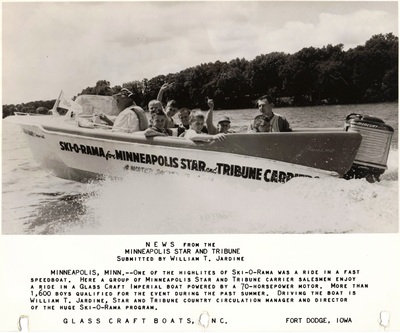|
1947, 19' Correct Craft
(Ski Nautique) All Original Luxury Ski Boat. Built with African mahogany plank, with the original Gray Marine engine. This boat was owned by Correct Craft, (Ski Nautique) for over 14 years as a boat that was used as example of the quality and history of Ski Nautique on a national tour during boat shows. The boat is Museum quality. The motor rebuild was done the famous George Woods of Unlimited Hydro plane racing fame. He drove the Miss Circus Circus, The Oberto & Miss Tide just to name a few. Every part of the engine was rebuilt to factory specs, from the twin single barrel carbs to the transmission to the blue printed and balance engine. Also converted to a 12 volt system and done so seamlessly. The engine is a thing of beauty and sounds incredible on its one-piece copper 2-½ inch straight pipe exhaust. Boat has a bar and mahogany drink holders. This boat has a movie background from the 50's. Correct Craft, INCManufacturer of Nautique Boats
History Walt C. Meloon created the Florida Variety Boat Company in 1925. During the early days, the company built a variety of craft ranging from sailboats to powerboats to race boats. By 1936, the primary focus of the company was the construction of power boats and the company name was officially changed to Correct Craft. Despite the Great Depression, the company continued to grow, developing a reputation for building boats of superior quality and excellent performance. During the Korean Conflict, Correct Craft, Inc. was awarded a government contract to build 3,000 boats, and they geared up to fill the order. However, an unscrupulous inspector demanded a bribe before he would approve the boats. The owners could not in good conscience do this, so more than 600 boats were rejected, and the company was forced into bankruptcy. Because they were men of their word, the Meloon family did not view bankruptcy as a release from their obligations. They started the slow process of rebuilding the company and paying back the debts they owed. It took 20 years of great personal sacrifice, but because of their commitment to stand behind their word, they were able to repay each of their creditors in full. Today the company has a worldwide reputation as the leader in the ski boat industry and an inspiring example of integrity. In the early 1940s through 1957, the recreational boat business prospered and Correct Craft operated an additional manufacturing facility in Titusville, Florida, building boats from 18–55 feet. The advent of fiberglass brought new possibilities to the marine industry in the 1960s and Correct Craft worked with an innovative designer named Leo Bentz to bring the fiberglass Nautique to market in 1961. In the 1970s, Correct Craft produced an array of runabouts, cuddy-cabin and center console models including the Southwind, Martinique, Cuddy Nautique, Fish Nautique and Ski Nautique. During the 1980s, towed water sports surged and the company's Ski Nautique 2001 and Barefoot Nautique pulled many tournaments around the world. In the 1990s, the focus on having no wake suddenly shifted to creating mountains of water behind the boat for kneeboarding and wakeboarding. Correct Craft caught the wave and invented an innovative tower to add even more height to these extreme sports. The patented Flight Control Tower, combined with factory installed ballast tanks, led to the creation of the Air Nautique. In the 2000s Nautique constructed a new manufacturing plant, located on the outskirts of Central Florida, a 217,000-square-foot (20,200 m2) facility. Nautique also introduced an advanced new saltwater capable package, the Coastal Edition available for select models. Nautique also introduced the innovative Ski Nautique 200, available in open or closed bow. |
Classic “1958”
Thompson 17’ Sea Lancer Thompson Boat was a builder of pleasure boats. The firm started operations at Peshtigo, Wisconsin in the early months of 1904. Peter and Christian (Christ) Thompson, the elder brothers of a large family made their first wooden boat in the hayloft of the family barn in early 1904. Local lumber was used, harvested in along the banks of the Peshtigo River. The first product was a modified lapstrake canoe, dubbed the "Anti-Leak" canoe by the brothers. The family came from Denmark and settled at Racine, Wisconsin. About 1899 they moved to undeveloped farmland near Peshtigo. Thompson Bros. Boat Mfg. Co. was incorporated in 1912 and by that time, six Thompson brothers were involved: Peter, Chris, Edward, Theodore, Adolh (Tom), and Richard. Their sister Hanna (Johanna) was office manager. A new factory complex was built within the city limits of Peshtigo in 1912 and the operation was moved from the cramped quarters at the Thompson farm, a few miles north of town. Thompson soon became the largest builder of outboard boats in the world. In 1924 a branch factory was secured in Cortland, NY. Tom and his sister Hanna Thompson were sent east to run the plant. In 1953 second generation Thompson family men (Ray, Glenn, Roy, Grant, Bob, and Ted, Jr.) started Cruisers, Inc., a builder of wooden lapstrake boats at Oconto, WI. Cruisers was formed with the full knowledge, encouragement, and cooperation of the elder Thompson men and Thompson Bros. Boat Mfg. Co. In fact, for the first year of operation, Cruisers, Inc. made boats for Thompson Bros. Boat Mfg. Co. which were badged with the "Thompson" logo. By the mid 1950s Thompson Bros. Boat switched from primarily making cedar strip built hulls to plywood lapstrake boats. The greater horsepower outboard motors were better suited to the very strong yet lightweight lapstrake hulls. Effective 1 January 1959 the three boat operations owned by the Thompson family at Peshtigo, Cortland, and Oconto were split amongst family branches. Thompson Bros. Boat Mfg. Co. at Peshtigo became property of Ray Thompson and family. The former branch at Cortland, NY became Thompson Boat Company of New York, Inc. with ownership in the hands of brothers Bob and Ted Thompson, Jr. and their cousin Glenn Thompson. Brothers Roy and G.Grant Thompson gained sole ownership of Cruisers at Oconto. All three firms made wooden lapstrake outboard boats. In 1960 Glenn Thompson decided to return to Wisconsin and venture out on his own. He established T & T Boats, Inc. and a factory was built in Wausaukee, Wisconsin. T & T also made wooden lapstrake outboard and inboard/outboard boats. It lasted until a liquidation auction signaled the firm's end in May 1965. Thompson Bros. Boat at Peshtigo was one of the earliest boatbuilders to embrace the new inboard/outboard propulsion unit that was introduced to the boating public at the New York Boat Show in early 1959. Volvo Penta of Sweden was the first to make a practical inboard/outboard engine and outdrive. By the summer of 1959 Thompson was installing these in their 17-ft. Sea Lancer and 19-ft. Off-Shore models as options. The transition from wood to fiberglass at all the Thompson operated boat firms was difficult. The family resisted the switch and felt that any high quality wooden boat could out perform, outlast, and outsell fiberglass. However, the 1960s consumer shied away from wood and purchased fiberglass or aluminum pleasure boats. Sales plummeted. Thompson Boat Company of New York, Inc. of Cortland, NY was purchased by Chris-Craft Industries in January 1962 and it became a wholly owned subsidiary. An immediate program of fiberglass boat development began. This initiative created the Corsair fiberglass division of Chris-Craft. The Corsair boats were made by Thompson Boat Company of New York in Cortland. In late 1964 Thompson Bros. Boat Mfg. Co. at Peshtigo, WI subcontracted with Crownline, Inc. of Cairo, IL to have the latter make fiberglass boats for them. This was a low cost means for Thompson to get an abbreviated line of fiberglass boats to supplement their wooden boat line. The arrangement did not last long as Crownline was having major financial difficulties. When Crownline closed down, Peter Thompson - the grandson of the original Peter Thompson - and another team member went to Cairo and retrieved the Thompson molds and tooling. It was too little and too late. The Thompson creditors in 1966 forced the sale of the company and Saul Padek got control of all the stock for less than $4,000 cash layout. The Thompson family was out of the boat business at Peshtigo. Under Padek's ownership Thompson Bros. Boat Mfg. Co. declared chapter 11 bankruptcy in September 1966. Padek began the slow painful switch from wood to fiberglass and by 1969 the last wooden boat rolled out of the plant at Peshtigo. Cruisers, Inc also resisted the change from wood to RFP. Grant Thompson researched markets, production methods, designs, and costs. Slowly they began making some fiberglass products. The relationships they had made with other boat makers over the years paid off. Cruisers, Inc. was able to get licensing deals with other entrenched fiberglass builders. This helped ease them from wood to glass. By 1967 they had dropped all wooden boats from their product line. The financial loss was significant. The company went from one of the most successful in the industry to just barely hanging on in a matter of a few years. The rebuilding took many years. Today, this is the only Thompson originated boat firm that still operates. It is called Cruisers Yachts and is a division of KCS International. T & T Boats of Wausaukee never made fiberglass boats. A liquidation auction in May 1965 signalled their demise. Chris-Craft closed the Cortland plant in 1974 which had been a Thompson operation. Thompson Boat at Peshtigo went bankrupt and closed in 1980. A Thompson dealer in the Detroit area bought the assets from the bankruptcy court and the entire operation was moved from Peshtigo to St. Charles, MI that year. 76 years of boat building tradition at Peshtigo came to an end. The revitalized Thompson Boat at St. Charles slowly rebuilt, but bankruptcy was declared in 1993. A new owner came in and got the firm going again. By about 1997 regular production ceased and all boat production stopped by 2000 or 2001. A liquidation auction in 2002 signaled the end of almost 100 years of boat building history. The Thompson Antique & Classic Boat Rally celebrates the company's history with a boat show every other year. |
"1958" 16' Class Craft Olympia, Tahiti Coral
Glass Craft Boats, Inc.
Fort Dodge, Iowa
History thanks to Lee Wangstead
Glass Craft Boats was begun by Oral and Willard Musick who sold the company in 1957 and went on to found Span America Boats. The boats had been designed by Ray and Arch Sindlinger who went on to form the Ft. Dodge Boat Co., building and selling Cruise-About Boats. Glass Craft later became Glass Marine Industries of Humboldt, Iowa.
N.J. Savaiano, president and treasurer of Glass Marine Industries, Inc. acquired the assets, unfinished stock, and trademark of Glass Craft Boats, Inc. of Humboldt, Iowa, with the deal completed by February 1st, 1960. Officials included R. A. "Rod" Schwahn continuing as general sales manager, Jack Willard as office manager, and Carl Zuspan as superintendent. Plans were made to build a 30,000 sq. ft. factory which would triple production facilities (April 1960 Boat & Motor Dealer).
In 1960, Glass Marine Industries announced a deal with Hanley Hydrojet, Inc. to produce a 18' fiberglass jet boat with the Hydrojet drive (May 1, 1960 St. Petersburg Times). Keenan Hanley, inventor of the Hydrojet, was on the board of directors of Glass Marine. Nicholas Savaiano was president of the corporation. 300,000 shares were sold, yielding $451,000 of which $100,000 was planned for plant construction, $50,000 to build up inventory. Litigation ensued as the company came under investigation for mis-use of the stock sale receipts. Accusations were that the company used the money for financing other ventures besides the boat building and marine unit business (Dec. 19, 1960 Milwaukee Journal).
The June 25, 1964 Chicago Tribune reported the merger of Glass Marine Industries, Inc. with Plastic Engineers & Consultants of Costa Mesa, California. The article described Plastic Engineers as operating as Glass Laminates, a builder of fiberglass sailboats. A Nov. 12, 1964 Los Angeles Times article described Glass Marine Industries of Costa Mesa as introducing a line of Columbia-40 sailing yachts designed by Charles Morgan of Florida. This was organized as the Columbia Yachts Division of Glass Marine Industries.
Fort Dodge, Iowa
History thanks to Lee Wangstead
Glass Craft Boats was begun by Oral and Willard Musick who sold the company in 1957 and went on to found Span America Boats. The boats had been designed by Ray and Arch Sindlinger who went on to form the Ft. Dodge Boat Co., building and selling Cruise-About Boats. Glass Craft later became Glass Marine Industries of Humboldt, Iowa.
N.J. Savaiano, president and treasurer of Glass Marine Industries, Inc. acquired the assets, unfinished stock, and trademark of Glass Craft Boats, Inc. of Humboldt, Iowa, with the deal completed by February 1st, 1960. Officials included R. A. "Rod" Schwahn continuing as general sales manager, Jack Willard as office manager, and Carl Zuspan as superintendent. Plans were made to build a 30,000 sq. ft. factory which would triple production facilities (April 1960 Boat & Motor Dealer).
In 1960, Glass Marine Industries announced a deal with Hanley Hydrojet, Inc. to produce a 18' fiberglass jet boat with the Hydrojet drive (May 1, 1960 St. Petersburg Times). Keenan Hanley, inventor of the Hydrojet, was on the board of directors of Glass Marine. Nicholas Savaiano was president of the corporation. 300,000 shares were sold, yielding $451,000 of which $100,000 was planned for plant construction, $50,000 to build up inventory. Litigation ensued as the company came under investigation for mis-use of the stock sale receipts. Accusations were that the company used the money for financing other ventures besides the boat building and marine unit business (Dec. 19, 1960 Milwaukee Journal).
The June 25, 1964 Chicago Tribune reported the merger of Glass Marine Industries, Inc. with Plastic Engineers & Consultants of Costa Mesa, California. The article described Plastic Engineers as operating as Glass Laminates, a builder of fiberglass sailboats. A Nov. 12, 1964 Los Angeles Times article described Glass Marine Industries of Costa Mesa as introducing a line of Columbia-40 sailing yachts designed by Charles Morgan of Florida. This was organized as the Columbia Yachts Division of Glass Marine Industries.


